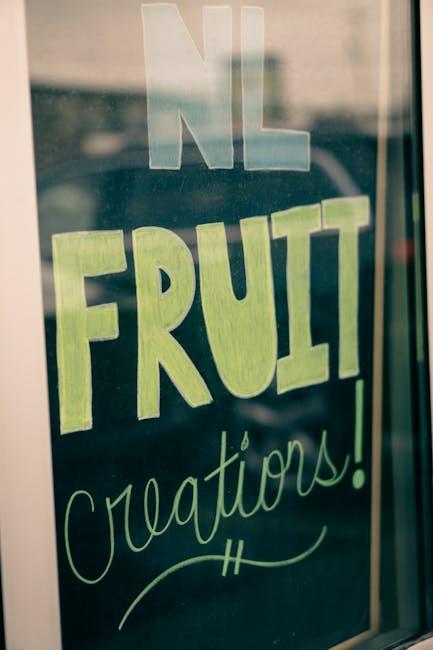
Welcome, aspiring logo designers, to the magical world of logo design! Just like Harry Potter needed his wand and Hermione her books, as a designer, you need to master the essential principles of logo design to create spells…err, logos that truly captivate and enchant your audience. So grab your virtual quills, put on your invisible cloaks of creativity, and let’s embark on a journey through the whimsical realm of logo design principles. Let’s make sure your logos are more “Accio customers!” than “Avada Kedavra sales!” Let’s dive in, shall we
simplicity-in-logo-design”>Importance of Simplicity in Logo Design
When it comes to logo design, simplicity is key. A cluttered and complex logo can leave customers feeling overwhelmed and confused. Imagine trying to decipher a logo with intricate designs, fancy fonts, and too many colors - it’s like trying to play a game of “Where’s Waldo” on steroids!
On the other hand, a simple and straightforward logo is like a breath of fresh air. It’s easy on the eyes and instantly recognizable. Think of iconic logos like Nike’s swoosh or Apple’s bitten apple – they’re so simple yet so memorable. A good logo should be like a good joke: short, sweet, and to the point.
Not convinced yet? Well, consider this: a simple logo is versatile and adaptable. It can be used across a variety of mediums without losing its impact. Whether it’s printed on a business card, displayed on a billboard, or featured on a website, a simple logo will always look sharp and on point.
So, the next time you’re designing a logo, remember the golden rule: keep it simple, silly! Your customers will thank you, your brand will thank you, and your designer will thank you (trust me, they’ll thank you).

Understanding the Target Audience
So you’re trying to understand your target audience, huh? Well, let me tell you, it’s not as easy as it seems. It’s like trying to decode ancient hieroglyphics while blindfolded – tricky, but not impossible!
First things first, you need to get inside the minds of your target audience. **Think like them, talk like them, eat like them** (okay maybe not that last one). What are their interests? What keeps them up at night? Once you’ve figured that out, you’re halfway there!
Next, you need to do some good ol’ fashioned research. **Stalk them on social media, send out surveys, bribe them with freebies** (just kidding… kind of). The more you know about your target audience, the better you can tailor your content to their needs and interests.
Lastly, don’t be afraid to experiment and try new things. **Get out of your comfort zone, take risks, be bold** (but not too bold, you don’t want to scare them away). Remember, understanding your target audience is an ongoing process, so keep learning, keep growing, and most importantly, keep laughing along the way!

Effective Use of Color in Logos
When it comes to creating a logo, choosing the right colors can make or break the design. Here are some tips to help you effectively use color in your logos:
Consider the psychology behind colors:
- Red: Bold and attention-grabbing, perfect for creating a sense of urgency or excitement.
- Blue: Trustworthy and calming, ideal for promoting professionalism and reliability.
- Yellow: Energetic and optimistic, great for conveying happiness and positivity.
- Green: Associated with growth and nature, ideal for brands focusing on sustainability or health.
Avoid using too many colors:
- Stick to a maximum of three colors to keep your logo clean and easy on the eyes.
- Too many colors can make your logo look cluttered and overwhelming.
Test your color choices:
- Make sure your logo looks good in both color and black and white.
- Test different background colors to ensure your logo stands out and is legible in various contexts.

Creating a Timeless Design
When it comes to , you want to make sure your work stands the test of time. Here are a few tips to help you achieve that:
- Keep it simple: A cluttered design will quickly go out of style. Stick to clean lines and minimalistic elements to ensure that your design remains relevant for years to come.
- Choose classic colors: Opt for timeless hues like navy blue, forest green, and beige. Avoid trendy colors that may quickly become outdated.
- Focus on quality: Invest in high-quality materials and craftsmanship. A well-made piece will last longer and look better over time.
Remember, timeless design is all about balance. Incorporating both classic and modern elements can help create a look that will stay stylish for decades to come. So go ahead, channel your inner design guru and create something truly timeless!

Balancing Typography and Imagery
When it comes to , it’s like trying to balance a stack of pancakes on a unicycle – it requires skill, finesse, and a dash of creativity. Your fonts and images need to work together like a harmonious peanut butter and jelly sandwich, complimenting each other and creating a visually appealing feast for the eyes.
First things first, let’s talk about font choices. Just like choosing the right wine to pair with your meal, selecting the perfect font can make or break your design. Make sure to choose fonts that not only look good together, but also convey the right tone and style for your project. **Pro Tip:** Mix and match serif and sans-serif fonts for some extra pizzazz.
Next up, let’s discuss imagery. A picture is worth a thousand words, so make sure your images are speaking the same language as your typography. Whether you’re using photographs, illustrations, or graphics, make sure they enhance your text and help tell your story. **Remember:** Less is more – don’t overcrowd your design with too many images that distract from your message.
In conclusion, striking the perfect balance between typography and imagery is like finding the last missing piece of a puzzle – it completes the picture and ties everything together. So get out there, experiment, and have fun creating visually stunning designs that will leave your audience craving for more. Trust me, your design skills will be the talk of the town!
Utilizing Negative Space in Logo Design
Negative space is like the shy friend at a party – often overlooked, but can steal the show if given the chance. In logo design, incorporating negative space can elevate a design from basic to brilliant with just a few clever tricks up your sleeve.
One trick to master the art of negative space in logo design is the use of figure-ground reversal. This technique involves creating a visual illusion of two different images depending on whether you focus on the background or the foreground. It’s like a logo with multiple personalities, always keeping your audience on their toes.
Another way to utilize negative space in logo design is through hidden symbols and messages. By strategically placing shapes and lines within the negative space of a logo, you can create a secondary meaning or imagery that adds depth and intrigue to the design. It’s like a little scavenger hunt for your eyes, uncovering hidden gems within the negative space.
Lastly, negative space can be used to create visual balance and harmony in a logo design. By leaving empty space around the main elements of the logo, you can allow the design to breathe and avoid visual clutter. Just like a well-organized closet, a logo with negative space feels clean, organized, and effortlessly chic.
scalability-and-versatility”>Ensuring Scalability and Versatility
Are you tired of your business hitting a roadblock whenever you try to expand? Fear not, for we have the solution to all your scalability and versatility woes! With our cutting-edge technology and innovative strategies, we can catapult your business to new heights without breaking a sweat.
Our team of experts will work tirelessly behind the scenes to ensure that your business can handle any challenges that come its way. We’ll set up a robust infrastructure that can scale effortlessly as your business grows, so you can say goodbye to those pesky technical limitations.
But wait, there’s more! Our solutions are not only scalable but also versatile, allowing you to adapt to changing market conditions with ease. Whether you need to pivot your business model or introduce new products and services, we’ve got you covered. Our dynamic approach will keep your business ahead of the curve and ready for whatever the future holds.
So why wait? Join us on this exciting journey to scalability and versatility, and watch your business soar to new heights. With our team by your side, the sky’s the limit!
FAQs
What is the most important principle to keep in mind when designing a logo?
The most important principle to keep in mind when designing a logo is simplicity. Remember, your logo needs to be able to be recognized and understood at a glance, so keep it clean and straightforward.
How can I make sure my logo is versatile and works in multiple applications?
To ensure your logo is versatile, make sure it looks great in both color and black and white, and in different sizes. Test it out on various backgrounds to see how it holds up in different contexts.
What should I consider when choosing fonts for my logo?
When choosing fonts for your logo, make sure they are easy to read and reflect your brand’s personality. Avoid trendy fonts that may go out of style quickly, and opt for timeless, classic options.
How can I make my logo memorable and stand out from the competition?
To make your logo memorable and stand out from the competition, focus on creating a unique and original design that captures the essence of your brand. Avoid cliches and generic symbols, and think outside the box to create something truly distinctive.
What role does color play in logo design?
Color is a crucial element in logo design, as it can evoke emotions and convey messages about your brand. Choose colors that reflect your brand’s personality and resonate with your target audience, but be mindful of how they will look in different contexts.
How important is it to get feedback on my logo design?
Getting feedback on your logo design is crucial to ensuring its success. Show your design to friends, colleagues, and target customers to get different perspectives and make any necessary tweaks to improve its effectiveness.
Conclusion: Let Your Creativity Shine!
Congratulations, you’ve made it through our crash course on essential logo design principles! Now armed with the knowledge of color theory, typography, simplicity, versatility, and uniqueness, you are ready to tackle any logo design project that comes your way.
Remember, a logo isn’t just a symbol – it’s a brand’s personality, values, and identity all rolled into one. So don’t be afraid to let your creative juices flow, experiment with different styles, and push the boundaries of design. After all, the best logos are the ones that stand out from the crowd and leave a lasting impression.
So go forth, budding designers, and create logos that will make the world take notice. And who knows, maybe one day your logo will be the next iconic symbol that everyone recognizes!











